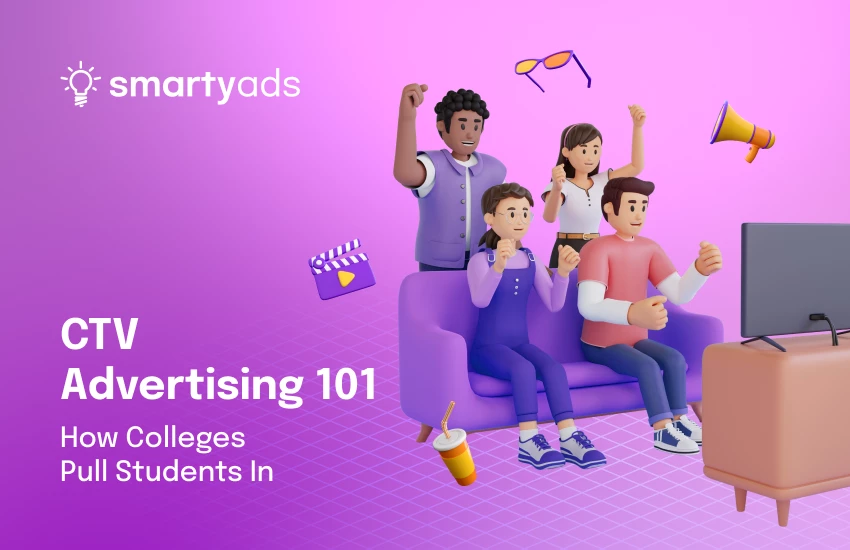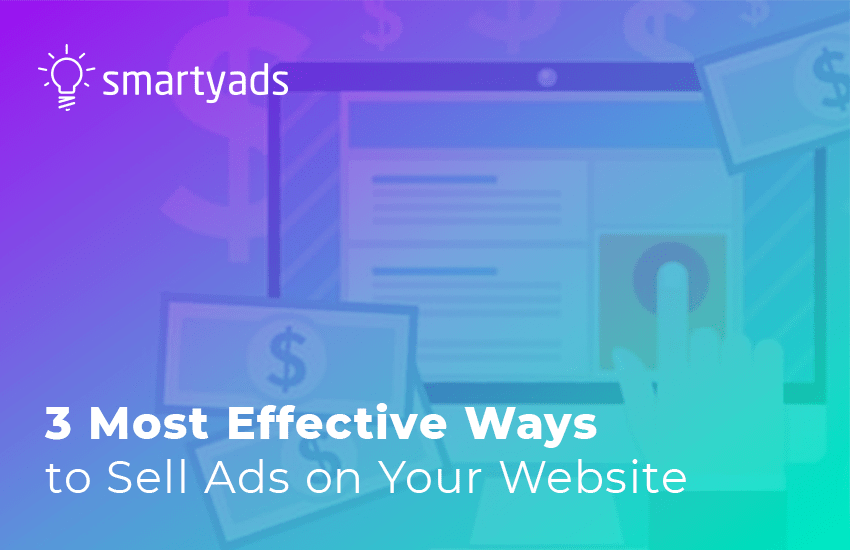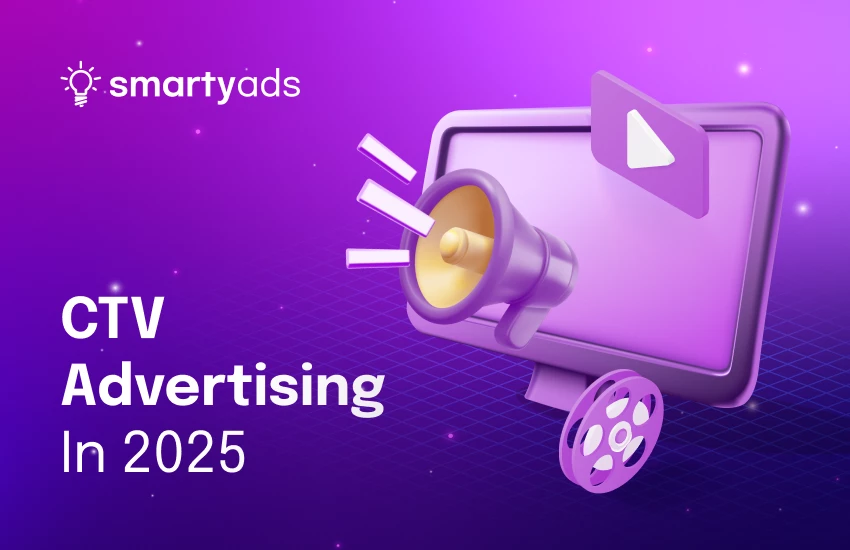Imagine trying to fish in a pond where your fish keep wandering off into rivers you don't even know exist. That’s pretty much what marketing to prospective students has felt like in recent years. Traditional media — TV, print, maybe some radio — used to be the pond. But now there are rivers, streams, and even underground springs: streaming platforms, OTT services, connected TVs. Colleges that aren’t looking there risk missing more than a nibble.
Connected TV (CTV) has quietly become one of those rivers for educational advertising — mighty, vast, and full of fish. And the American College of Education (ACE) case shows how you can cast your net the right way with modern advertising platforms and tools. Last but not least, these valuable insights apply not only to educational entities – brands in other industries can easily learn from such experiences.
The big shift: Why CTV isn’t just hype
Let’s start with some numbers:
- In 2025, 88% of U.S. households are expected to be CTV households.
- Among adults 18+ who are likely to start or return to school within 12 months, 92% watch ad-supported OTT (over-the-top) content.
- And here’s the kicker: 64% of those “education intenders” can’t be reached via traditional TV or cable. In other words, more than half of your potential students are already skipping cable.
- Also, people are spending more time on CTV than on traditional linear TV: about 2 hours and 35 minutes daily on CTV vs 2 hours and 29 minutes on traditional TV. Streaming now accounts for 51% of total TV time.
What the ACE case shows
From what we know from the AdExchanger, ACE used CTV (via MNTN) during a back-to-school campaign and got results that were hard to ignore:
- They were able to reach both the “hot leads” (those already ready to enroll) and those just testing the waters — using AI-enabled targeting.
- First-party data helped segment audiences (business, medicine, and education verticals).
- Their CPA (cost per acquisition) dropped by 34%, and cost per visit dropped by 27%. And with strong attribution tools (household-level verified visits), they could see who saw the ad and later visited the site.
More proof: Other schools and campaigns are doing it right
ACE isn’t alone. Let’s look at what others have done — stats from campaigns and industry reports that back up the theory.
- A vocational school working with Premion & agency KellyBrady ran a 7-month CTV campaign in three markets. The result? 7 million impressions, ~4,800 attributed website visits, $8 per website visit, and $79 per lead, all measured within 7 days of ad exposure.
- Also, more than half of advertisers using CTV/OTT plan to increase their spend. In a survey, 61% of Ad/Marketing teams expect to put more budget into CTV or OTT, with an average increase of 21%.
- Among those increases, many are reallocating budgets from linear TV, digital, and social media into CTV rather than just adding new money. It’s not just growth: it’s strategic rebalancing.
Stats that make the case — numbers that prove CTV growth
Here are some stats that prove – CTV popularity will only grow with time (source premion.com):
- 88% of U.S. households will be CTV households in 2025.
- 92% of adults likely to start/return to school in next 12 months watch ad-supported OTT.
- 64% of those education-intent people cannot be reached via traditional TV or cable.
- 61% of CTV/OTT advertisers plan to increase their spending, with average increase ~21%.
From “hmm, maybe college?” to “I’m enrolled”
What makes CTV so compelling for education marketing is that it can play many roles — like a Swiss Army knife. Let’s walk through a student’s journey to see how CTV fits in:
Awareness / Light curiosity
A student streams a show and sees a CTV ad for a college program they hadn’t considered. Maybe medicine, maybe education, maybe business. They register the name.
Consideration
The college then uses retargeting — maybe via display ads, video on other devices, or even further CTV placements — reminding them of open houses, deadlines, financial aid offers.
Decision / Action
Strong calls to action: maybe a QR code in the CTV ad (“scan to see the campus”), or visited website, or filling a form. Good attribution allows the college to see which ads led to which actions.
Enrollment
Ultimately, the goal: applications submitted, students enrolled. By measuring from the full funnel, you can see not just “impressions” but real students.
ACE’s drop in CPA and cost/visit shows that when this funnel works, you don’t just waste money casting a wide net — you get a bite where it counts.
Why brands (beyond colleges) should be eyeing this river
If you’re not in education, you might still want to take this channel into account. Because:
- Higher stakes, longer sales cycles (like education) force you to measure more deeply, optimize more carefully. If CTV works in that world, it can work anywhere.
- Attention matters: people tend to be more engaged in lean-back viewing modes (big TV screens, streaming) vs scrolling socials. The environment is premium.
- CTV allows mixing brand awareness with performance marketing metrics. You can build trust and get leads – that duality is rare.
It's important to remember that youngsters didn’t stop watching their favorite shows.
Yes, most of them stopped watching linear traditional TV, which failed to provide the content they were streaming on the internet. When internet-powered TV (CTV) came to the surface, it enabled them to stream internet content they wanted without being tied to a particular time or place—CTV can be consumed on big-screen TVs or through CTV apps and other devices. Moreover, advertising on CTV is normally way more affordable.
Think of traditional TV as a billboard on the highway: big, loud, hard to miss — but expensive, and only tangentially targeted. CTV is like GPS-guided billboards inside people’s homes: you get in front of them when they’re relaxed, interested, and less likely to tune you out. With CTV, you’re inviting people into your home, not just shouting from outside. You get to personalize the welcome mat (message, creative, call to action) depending on who’s arriving.
$10 vs $2,000 per ad spot
So, what about the price of TV ad placement? Is it really worth it?
Traditional TV:
Traditional TV ads can bite in terms of price. For example, national networks where a 30-second ad placement may cost you from $50,000 to over $500,000, and the final price will depend on such criteria as timing and popularity of the show. In comparison to this, local advertising is way more affordable with its $200 to $2,000 per ad spot; however, the prices are still high since it offers a broad reach (which is costly) but at the same time lacks the precision and measurability.
Connected TV (CTV):
CTV offers a more targeted and cost-efficient approach. The price varies between $10 to $30 for 1,000 ad impressions and the minimal fall within $0.02 to $0.10 per ad impression. That’s not all about being cheaper but also about being more effective – CTV is a targeted environments which can’t be compared with traditional TV marketing for mass audiences.
Keeping CTV ads effective – key tactics
While at this point, you might already be on the path of discovering top CTV platforms, choosing the right platform is only one part of the equation. As you get the robust tool ready in your hands, it is essential to learn how to leverage it so that it brings not just some results but results that really convert into strong advertising outcomes.
For this, you need to:
Zero in on Specific Viewers
There’s no need to overspend on sending your messages to everyone, even those who don’t need your educational services. Instead of this, focus on local and interest-based buys. Plus, OTT and CTV platforms allow laser-focused targeting based on viewing habits.
When it comes to educational advertising, here’s how it can look:
Local and interest-based buys:
- Colleges and universities can run ads on local TV channels or in regions where they recruit the most students.
- Community colleges can advertise aiming at nearby zip codes, showing affordability and accessibility for local residents (which is also possible with programmatic campaigns).
- Target niche shows (these could be science programs, international news, sports broadcasts). Those are suitable for targeting students with specific academic or extracurricular interests.
Streaming precision with CTV:
- Target students based on age groups (e.g., high school juniors and seniors), parental status (parents of teens researching colleges), or geography (specific cities or countries for international recruitment).
- There is a tactic for graduate programs as well. Behavioral targeting may help you reach professionals watching content related to such niches as business, tech, or healthcare.
- Use retargeting for those who previously engaged with your school’s online materials by showing them follow-up ads on streaming platforms.
Trim the Runtime
Sure, 30-second ads are still ruling the show; however, shorter formats are becoming more popular each year. A 15-second ad or even a 5-second bumper can catch attention faster and save you money for design (plus placement cost).
Blend TV With Other Channels
CTV shouldn’t work in isolation. Be sure to combine CTV campaigns with other media and channels (such as social, DOOH, and display campaigns). This strategy will help you to spread your message across different touchpoints, making it more memorable for your audience.
Now, let’s see how to deal with common challenges:
| Challenge | How to overcome |
| Data gaps: I don’t know enough about my audiences (students). | Build up first-party data: surveys, website behavior, past applicants; use look-alike audiences and third-party enriched data to fill in gaps. Read more about audience persona in our previous articles.
|
| Creative fatigue | Use CTV interactive creatives, test messaging (financial aid, career outcomes, flexibility), test formats (short vs long, interactive, QR codes). Keep it fresh. |
| Attribution problems | Use platforms that provide household-level analytics, brand-safe inventory, and verified visit metrics. Make sure you can trace what happens after the ad (site visits, form fills, enrollment). |
| Budget reallocation resistance | Show small tests, measure results, then scale. Use pilot campaigns to prove ROI; show what decreasing CPA or cost per lead looks like in real terms (e.g., fewer wasted impressions, better conversion). |
What to do next?
If you’re convinced or at least curious, here’s a roadmap you could follow (or propose):
- Audit your current reach: who are you reaching, who you aren’t. Where are your biggest leaks? (e.g., people who see your ads but don’t convert).
- Set up small pilot campaign(s) with CTV targeting a particular vertical (e.g., students in certain majors, career changers, regions). Allocate enough budget to test multiple creatives.
- Ensure tracking & attribution are solid from day one: site analytics, verified visits, video view metrics, retargeting ability.
- Measure early & often: Which creatives are working? Which segments converting? What about cost per visit, cost per lead? Be ready to adjust.
- Scale what works: roll out bigger when you see consistent wins.
- Creative refreshment & variation: change up messages, try dynamic creative, localize where possible, include urgency or offers (deadlines, open house invites).
For advertisers, the opportunity isn’t just about experimenting with CTV — it’s about tapping into ready-made, high-impact inventory that delivers results. With our CTV traffic packages,

Your brand messages land directly in living rooms during premium viewing moments, where attention is at its peak. From immersive placements in blockbuster shows to engaging spots during live sports, our packages ensure that your ads don’t just appear — they resonate. And because every brand has unique goals, we also provide on-demand CTV solutions tailored to specific verticals, from education and healthcare to retail, travel, and beyond. Whether you want to attract future students, reach sports fans, or capture decision-makers in niche industries.
Wrapping up: The river is flowing — is your boat ready?
If education marketing is a race, then CTV is giving runners a downhill slope. It’s not going to carry you all the way if your shoes (creative, targeting, attribution) are worn out. But if you build a solid pair, you’ll run faster, farther, with less fatigue.
The ACE case, the Premion campaigns, the stats — they tell the same story: those willing to lean into CTV are seeing better CPAs, more engaged audiences, and smoother paths from awareness → action → enrollment.
For brands of all stripes: the opportunity is here. The river is flowing. You don’t need to build the boat to start rowing as you can launch impactful CTV campaigns with our deals.
Get to know more about our curated deals!




